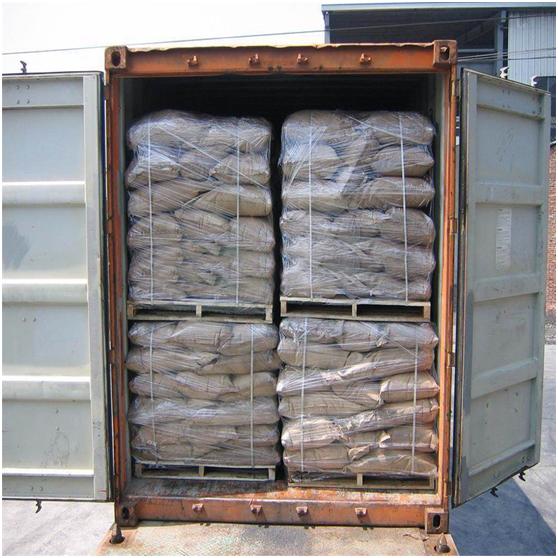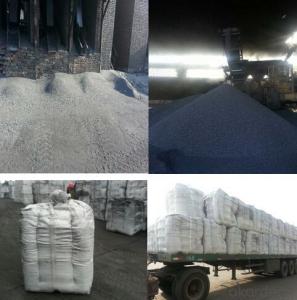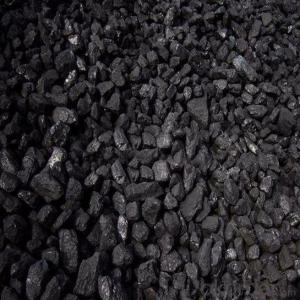Recarburant carbon graphite powder calcined petcoke petroleum coke
- Loading Port:
- Dalian
- Payment Terms:
- TT OR LC
- Min Order Qty:
- 10 m.t
- Supply Capability:
- 500000 m.t/month
OKorder Service Pledge
Quality Product, Order Online Tracking, Timely Delivery
OKorder Financial Service
Credit Rating, Credit Services, Credit Purchasing
You Might Also Like
Specifications of Recarburizer for Steelmaking:
As an ideal carbon additive and intermediate reactor
it has been widely used in different indust
Recarburizer for steelmaking
- F.C.: 90%min
ASH: 8%max
V.M.: 2%max
S: 0.5%max
MOI: 1%max
- F.C.: 93%min
ASH: 6%max
V.M.: 1%max
S: 0.5%max
MOI: 1%max
- F.C.: 95%min
ASH: 4%max
V.M.: 1%max
S: 0.5%max
MOI: 1%max
We also can supply the size is as customers' requirements.

- Q:What are the environmental impacts of burning fossil fuels?
- The burning of fossil fuels has significant environmental consequences that contribute to both climate change and air pollution. When coal, oil, and natural gas are burned, they release greenhouse gases, primarily carbon dioxide (CO2), into the atmosphere. These gases trap heat, resulting in global warming and climate change. The increased concentration of CO2 in the atmosphere is the main cause of global warming, which leads to higher temperatures and changes in weather patterns. Consequently, natural disasters like hurricanes, droughts, and floods become more frequent and severe. The melting of polar ice caps and glaciers is also accelerated, causing rising sea levels that pose a threat to coastal communities and ecosystems. In addition to climate change, the burning of fossil fuels releases other harmful air pollutants, including nitrogen oxides (NOx) and sulfur dioxide (SO2). These pollutants contribute to the formation of smog and acid rain, which have detrimental effects on human health, agriculture, and ecosystems. Furthermore, the extraction and transportation of fossil fuels cause environmental degradation. Activities such as coal mining and oil drilling can result in deforestation, destruction of habitats, and pollution of soil and water. Oil spills from offshore drilling operations, like the Deepwater Horizon disaster in the Gulf of Mexico, have devastating consequences for marine life and ecosystems. Overall, the environmental impacts of burning fossil fuels are extensive and severe. It is crucial to transition to cleaner and renewable energy sources in order to mitigate climate change, reduce air pollution, and protect our planet for future generations.
- Q:How is carbon used in the production of carbon nanomaterials?
- Carbon is a crucial element in the production of carbon nanomaterials, as it serves as the building block for their unique structure and properties. There are various methods used to produce carbon nanomaterials, such as carbon nanotubes and graphene, all of which rely on the manipulation and organization of carbon atoms. One common method for producing carbon nanomaterials is through chemical vapor deposition (CVD). In this process, a carbon-containing gas, such as methane or ethylene, is introduced into a high-temperature furnace. Inside the furnace, the gas decomposes, releasing carbon atoms. These carbon atoms then reassemble and form nanoscale structures, such as carbon nanotubes or graphene, on a substrate or catalyst material. Another approach involves the vaporization of carbon-containing compounds, such as carbon black or graphite, using techniques like laser ablation or arc discharge. The vaporized carbon then condenses and solidifies into carbon nanomaterials with specific structures and properties. In both methods, the control of temperature, pressure, and the presence of catalysts or other additives allows for the precise manipulation of the carbon atoms, resulting in the desired carbon nanomaterials. The unique arrangement of carbon atoms in these materials, such as the hexagonal lattice structure of graphene or the cylindrical structure of carbon nanotubes, gives rise to their exceptional mechanical, electrical, and thermal properties. Overall, carbon plays a fundamental role in the production of carbon nanomaterials by providing the necessary atoms for their formation and determining their structure and properties. This knowledge and control over carbon's behavior at the atomic level enable scientists and engineers to develop nanomaterials with a wide range of applications, from electronics and energy storage to medicine and environmental remediation.
- Q:What are the consequences of increased carbon emissions on global food security?
- Increased carbon emissions have significant consequences on global food security. Firstly, rising carbon dioxide levels can lead to changes in temperature and precipitation patterns, affecting crop productivity and water availability. This can result in reduced yields, crop failures, and increased vulnerability to pests and diseases, ultimately impacting food production and availability. Furthermore, carbon emissions contribute to climate change, which exacerbates extreme weather events like droughts, floods, and heatwaves. These events can destroy crops, disrupt supply chains, and increase food prices, making it difficult for vulnerable populations to access nutritious food. Additionally, climate change may lead to the loss of arable land due to desertification, sea-level rise, or other environmental changes, further diminishing food production capacity. Moreover, carbon emissions contribute to ocean acidification, which harms marine ecosystems and disrupts the food chain. This can negatively impact fish stocks and other seafood sources, affecting the livelihoods of coastal communities who rely on fishing as a primary source of food and income. Overall, increased carbon emissions have severe consequences for global food security, threatening the stability and accessibility of food supplies both on land and in the oceans. Addressing carbon emissions and adopting sustainable practices are essential in safeguarding our food systems and ensuring the wellbeing of future generations.
- Q:How do you stick carbon fabric?
- 3. Apply the base resin(1) the main agent and curing agent base resin according to the provisions of the proportion accurate weighing were put into the container, use a blender to mix uniformly. A harmonic volume should be in use within the time spent more than can be used as the standard, time cannot be used.(2) apply the base coat evenly with a roller brush(3) refers to the drying time, due to different temperatures, generally between 3H to 1D changes(4) after the curing of the base coat, when the surface of the component has a condensation bulge, it should be polished with sandpaper. If the surface of the concrete is exposed after polishing, the bottom coating shall be applied again4, the incomplete repair of the surface of the componentThe surface depressions (honeycomb pits, holes, etc.) using epoxy putty to fill, to repair the surface. (the poor, camber angle etc.) to be filled with epoxy putty, so smooth.
- Q:How is carbon formed in stars?
- Carbon is formed in stars through a process known as nuclear fusion. In the core of a star, hydrogen atoms undergo a series of fusion reactions, ultimately fusing together to form helium. This process releases a tremendous amount of energy and is responsible for the heat and light that stars emit. As the core of a star continues to heat up and the pressure increases, helium atoms start fusing together to form heavier elements. At some point, three helium nuclei can combine to form a carbon nucleus. This process, known as the triple alpha process, requires very specific conditions, including a high enough temperature and pressure, for it to occur. The triple alpha process relies on the fact that carbon-12 has a very specific energy level that allows three helium nuclei to come together and form a stable carbon nucleus. This is because the energy level of carbon-12 aligns perfectly with the energy levels of helium nuclei, allowing them to overcome the electrostatic repulsion and fuse together. Once carbon is formed in the core of a star, it can continue to undergo fusion reactions to form even heavier elements, such as oxygen and nitrogen. These elements are crucial building blocks for the formation of planets, including our own Earth, as they are eventually expelled into space during a star's later stages of evolution.
- Q:What are the effects of carbon emissions on the stability of urban infrastructure?
- Carbon emissions have a significant impact on the stability of urban infrastructure. The release of carbon dioxide and other greenhouse gases into the atmosphere from various sources, such as industrial activities, transportation, and energy production, contribute to climate change. This, in turn, poses several challenges to urban infrastructure. One of the primary effects of carbon emissions on urban infrastructure stability is the increased frequency and severity of extreme weather events. Climate change leads to more intense heatwaves, storms, hurricanes, and flooding, which can cause significant damage to buildings, roads, bridges, and other infrastructure components. Higher temperatures can also lead to the expansion and contraction of materials, resulting in structural issues and decreased durability. Moreover, carbon emissions contribute to rising sea levels due to the melting of polar ice caps. This puts coastal cities at risk of flooding and erosion, threatening critical infrastructure located in these regions. As sea levels continue to rise, the stability of urban infrastructure, including ports, water treatment facilities, and transportation systems, is compromised. Another consequence of carbon emissions on urban infrastructure stability is the impact on energy supply and demand. As climate change progresses, extreme weather events can disrupt power grids and energy infrastructure, leading to blackouts and disruptions in services. Additionally, increased energy demand for cooling systems in response to rising temperatures can overload existing infrastructure, putting strain on the electrical grid. Furthermore, carbon emissions contribute to air pollution, which adversely affects the health and well-being of urban populations. Poor air quality can lead to respiratory and cardiovascular diseases, impacting the workforce and productivity. This can indirectly affect the stability of urban infrastructure as a healthy and productive population is essential for the maintenance and functioning of cities. To mitigate the effects of carbon emissions on the stability of urban infrastructure, various measures can be taken. These include shifting to renewable energy sources, improving energy efficiency in buildings and transportation, implementing sustainable urban planning strategies, and investing in climate-resilient infrastructure. These actions can help reduce carbon emissions and build infrastructure that is better equipped to withstand the challenges posed by climate change, ultimately ensuring the stability and resilience of urban areas.
- Q:What are the consequences of increased carbon emissions on urban areas?
- Urban areas are significantly affected by the increase in carbon emissions, which have notable impacts on various aspects. One of the most significant consequences is the worsening of air pollution. The release of harmful pollutants like nitrogen oxides and particulate matter is contributed by carbon emissions, especially from vehicles and industrial activities. These pollutants can cause respiratory problems, worsen existing health conditions, and increase the risk of lung cancer and cardiovascular diseases among urban residents. Moreover, the increase in carbon emissions leads to the occurrence of urban heat islands. This happens because carbon dioxide and other greenhouse gases trap heat in the atmosphere, resulting in higher temperatures in urban areas. This effect is particularly pronounced due to the abundance of concrete and asphalt surfaces that absorb and radiate heat. Consequently, urban areas experience higher temperatures compared to nearby rural areas, further intensifying the discomfort and health risks associated with heat stress, particularly for vulnerable populations like the elderly and those with limited access to cooling resources. The consequences of increased carbon emissions also extend to the natural environment. Urban green spaces and ecosystems are negatively affected as higher levels of carbon dioxide disrupt plant growth and reduce biodiversity. This exacerbates the loss of natural habitats and the degradation of urban ecosystems, leading to a decline in the provision of ecosystem services such as air purification, temperature regulation, and stormwater management. Additionally, increased carbon emissions have economic implications for urban areas. As carbon emissions rise, the cost of addressing climate change-related challenges like flooding and extreme weather events increases. This puts a strain on the budgets of local governments and may result in higher taxes or reduced funding for other essential services. To tackle these consequences, it is crucial for urban areas to implement strategies that reduce carbon emissions and promote sustainability. This includes investing in public transportation, encouraging the use of renewable energy sources, promoting energy-efficient buildings, and implementing policies to reduce vehicle emissions. By adopting these measures, urban areas can mitigate the negative effects of increased carbon emissions and create healthier, more sustainable environments for their residents.
- Q:What's the reason for grading? What about the use of composites? What's the difference?
- 3, carbon fiber has high strength, high modulus, high temperature resistance, corrosion resistance, fatigue resistance, creep resistance, electrical conductivity, heat transfer and other characteristics, is a typical high-tech products. Mainly used in the preparation of advanced composite materials (ACM), has been widely used in aerospace, sporting goods industry, industrial fields, transportation and civil construction field. In view of the composite technology in military industry, reduce the cost of carbon fiber atrophy and advanced low cost manufacturing breakthrough, carbon fiber composite material used in construction, industry, transportation and other aspects has become a hot research and development, and achieved a breakthrough in certain
- Q:How does carbon affect the quality of soil?
- Carbon plays a crucial role in determining the quality of soil. When organic matter, such as dead plants and animals, decomposes, it releases carbon into the soil. This process is known as carbon sequestration, and it is essential for maintaining soil fertility and health. The presence of carbon in soil promotes the growth of beneficial microorganisms, such as bacteria and fungi, which contribute to the breakdown of organic matter and the recycling of nutrients. These microorganisms help to create a rich and fertile soil environment, ensuring that essential nutrients are available for plants to absorb. Additionally, carbon in soil improves its structure and water-holding capacity. It acts as a sponge, allowing the soil to retain moisture, which is crucial for plant growth and survival. Carbon also helps to prevent soil erosion by binding particles together, reducing the risk of nutrient loss and water runoff. Furthermore, carbon enhances the soil's ability to store and release nutrients. It acts as a reservoir, holding onto essential elements like nitrogen, phosphorus, and potassium, and gradually releasing them to plants over time. This nutrient cycling is vital for sustaining healthy plant growth and productivity. Unfortunately, modern agricultural practices, such as excessive tilling, overuse of synthetic fertilizers, and deforestation, have led to a significant decline in soil carbon levels. This loss of carbon has detrimental effects on soil quality, leading to decreased fertility, increased erosion, and reduced water-holding capacity. To mitigate these negative impacts, it is crucial to adopt sustainable agricultural practices that focus on carbon sequestration and soil conservation. These practices include reducing tillage, incorporating cover crops, practicing crop rotation, and applying organic fertilizers. By increasing carbon levels in soil, we can improve its quality, promote plant growth, and ensure the long-term sustainability of our agricultural systems.
- Q:What is the carbon content of different fuels?
- The carbon content of different fuels can vary significantly depending on their composition and source. However, in general, fossil fuels such as coal, oil, and natural gas have high carbon content. Coal, which is primarily composed of carbon, typically contains around 60-80% carbon. This makes coal a highly carbon-intensive fuel and a major contributor to greenhouse gas emissions when burned. Crude oil and petroleum products, such as gasoline and diesel, also have high carbon content, ranging from 80-90%. When these fuels are burned, they release significant amounts of carbon dioxide (CO2) into the atmosphere. Natural gas, consisting mainly of methane (CH4), has a lower carbon content compared to coal and oil. Methane itself is composed of one carbon atom and four hydrogen atoms, resulting in a carbon content of around 75%. Although natural gas emits less CO2 when burned compared to coal and oil, methane itself is a potent greenhouse gas, which can contribute to climate change. Renewable fuels, such as biofuels, have varying carbon contents depending on their source. Biofuels are derived from organic materials, such as plants and agricultural waste, and can have carbon contents similar to fossil fuels. However, since biofuels are derived from recently living organisms, the carbon dioxide emitted during their combustion is considered part of the natural carbon cycle and does not contribute to long-term increases in atmospheric CO2 levels. Overall, the carbon content of different fuels is an important factor in determining their environmental impact and contribution to climate change. Transitioning to low-carbon or carbon-neutral fuels is crucial in reducing greenhouse gas emissions and mitigating the effects of climate change.
1. Manufacturer Overview |
|
|---|---|
| Location | |
| Year Established | |
| Annual Output Value | |
| Main Markets | |
| Company Certifications | |
2. Manufacturer Certificates |
|
|---|---|
| a) Certification Name | |
| Range | |
| Reference | |
| Validity Period | |
3. Manufacturer Capability |
|
|---|---|
| a)Trade Capacity | |
| Nearest Port | |
| Export Percentage | |
| No.of Employees in Trade Department | |
| Language Spoken: | |
| b)Factory Information | |
| Factory Size: | |
| No. of Production Lines | |
| Contract Manufacturing | |
| Product Price Range | |
Send your message to us
Recarburant carbon graphite powder calcined petcoke petroleum coke
- Loading Port:
- Dalian
- Payment Terms:
- TT OR LC
- Min Order Qty:
- 10 m.t
- Supply Capability:
- 500000 m.t/month
OKorder Service Pledge
Quality Product, Order Online Tracking, Timely Delivery
OKorder Financial Service
Credit Rating, Credit Services, Credit Purchasing
Similar products
New products
Hot products
Related keywords































